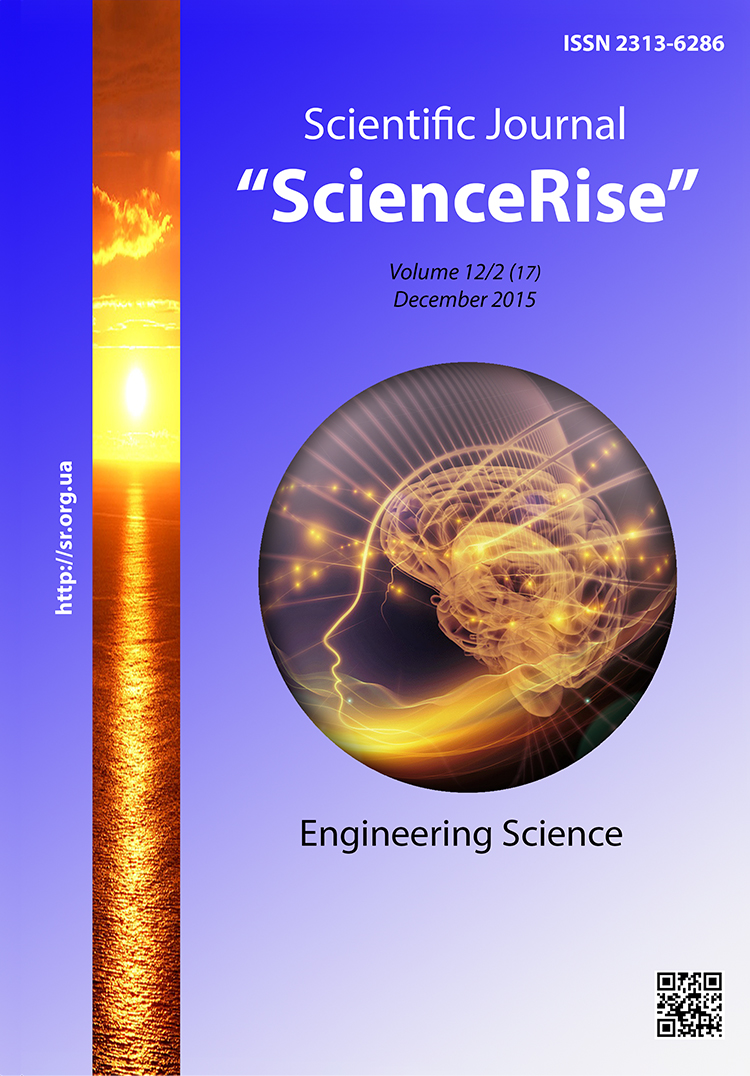Nanoelectronics «bottom – up»: the role of electrostatics and contacts
DOI:
https://doi.org/10.15587/2313-8416.2015.56272Keywords:
nanophysics, nanoelectronics, molecular electronics, diffusion-drift model, saturation current, role of contactsAbstract
Within the concept of «bottom – up» approach of modern nanoelectronics the diffusion-drift model of a current on the basis of the Boltzmann transport equation, the role of the external electric field beyond the linear response regime, field-effect transistor and saturation current, the role of conductor charging, the point and extended models of a conductor, the role of contacts, the model of p – n junctions, the generation of a current in a conductor with asymmetric contacts are discussed
References
Krugliak, Iu. A. (2015). Nanoelectronics «bottom – up»: current generation, generalized ohm’s law, elastic resistors, conductivity modes, thermoelectricity. ScienceRise, 7/2 (12), 76–100. doi: 10.15587/2313-8416.2015.45700
Krugliak, Iu. A. (2015). The «bottom – up» nanoelectronics: elements of spintronics and magnetronics. ScienceRise, 8/2 (13), 51–68. doi: 10.15587/2313-8416.2015.47792
Datta, S. (2012). Lessons from Nanoelectronics: A New Perspective on Transport. Hackensack, New Jersey: World Scientific Publishing Company, 492. doi: 10.1142/8029
Einstein, A. (1905). Über die von der molekularkinetischen Theorie der Wärme geforderte Bewegung von in ruhenden Flüssigkeiten suspendierten Teilchen. Annalen Der Physik, 322 (8), 549–560. doi: 10.1002/andp.19053220806
Lindsay, S. (2009). Introduction to Nanoscience. Oxford, England: Oxford University Press, 472.
Ashkroft, N., Mermin, N. (1979). Fizika tverdogo tela. Vol. 1-2. Moscow: Mir, 393, 392. Available at: http://mat.net.ua/mat/biblioteka-fizika/Ashkroft-tverdoe-telo-t1.pdf
Krugliak, Iu. A. (2015). «Bottom – up» nanoelectronics: the Hall effects, measurement of electrochemical potentials and spin transport in the negf model. ScienceRise, 10/2 (15), 35–67. doi: 10.15587/2313-8416.2015.51353
Sears, F. W., Salinger, G. L. (1975). Thermodynamics, Kinetic Theory, and Statistical Thermodynamics. Boston: Addison-Wesley, 454.
Krugliak, Iu. A. (2015). Graphene in Landauer – Datta – Lundstrom transport model. ScienceRise, 2/2 (7), 93–106. doi: 10.15587/2313-8416.2015.36443
Krugljak, Ju. A., Krugljak, N. E. (2012). Metodicheskie aspekty rascheta zonnoj struktury grafena s uchetom σ–ostova. Teoreticheskie osnovy. Vіsnik Odes'kogo derzh. ekologіchnogo un-tu, 13, 207–218.
Rabiu, M., Mensah, S. Y., Abukari, S. S. (2013). General Scattering Mechanism and Transport in Graphene. Graphene, 02 (01), 49–54. doi: 10.4236/graphene.2013.21007
Bode, N., Mariani, E., von Oppen, F. (2012). Transport properties of graphene functionalized with molecular switches. Journal of Physics: Condensed Matter, 24 (39), 394017. doi: 10.1088/0953-8984/24/39/394017
Dong, H. M., Xu, W., Peeters, F. M. (2011). High-field transport properties of graphene. Journal of Applied Physics, 110 (6), 063704. doi: 10.1063/1.3633771
Chauhan, J., Guo, J. (2011). Inelastic Phonon Scattering in Graphene FETs. IEEE Transactions on Electron Devices, 58 (11), 3997–4003. doi: 10.1109/ted.2011.2164253
Peres, N. M. R. (2010). Colloquium : The transport properties of graphene: An introduction. Reviews of Modern Physics, 82 (3), 2673–2700. doi: 10.1103/revmodphys.82.2673
Barreiro, A., Lazzeri, M., Moser, J., Mauri, F., Bachtold, A. (2009). Transport Properties of Graphene in the High-Current Limit. Physical Review Letters, 103 (7). doi: 10.1103/physrevlett.103.076601
Bol'cman, L. (1984). Izbrannye trudy. Moscow: Mir, 590.
Tarkiainen, R., Ahlskog, M., Penttilä, J., Roschier, L., Hakonen, P., Paalanen, M., Sonin, E. (2001). Multiwalled carbon nanotube: Luttinger versus Fermi liquid. Physical Review B, 64 (19). doi: 10.1103/physrevb.64.195412
Naeemi, A., Savari, R., Meindl, D. (2004). Perfomance comparison between carbon nanotube and copper interconnects for GSI. IEDM Technical Digest. IEEE International Electron Devices Meeting, 699–702. doi: 10.1109/iedm.2004.1419265
Burke, P. J. (2002). Luttinger liquid theory as a model of the gigahertz electrical properties of carbon nanotubes. IEEE Transactions On Nanotechnology, 1 (3), 129–144. doi: 10.1109/tnano.2002.806823
Burke, P. J. (2003). An RF circuit model for carbon nanotubes IEEE Transactions On Nanotechnology, 2 (1), 55–58. doi: 10.1109/tnano.2003.808503
Salahuddin, S., Lundstrom, M., Datta, S. (2005). Transport Effects on Signal Propagation in Quantum Wires. IEEE Transactions on Electron Devices, 52 (8), 1734–1742. doi: 10.1109/ted.2005.852170
Kruglyak, Yu. O., Kruglyak, N. E., Strikha, M. V. (2013). Lessons of nanoelectronics: Thermoelectric phenomena in «bottom-up» approach. Sensor Electronics and Microsystem, 10 (1), 6–21.
Rahman, A., Jing Guo, Datta, S., Lundstrom, M. S. (2003). Theory of ballistic nanotransistors. IEEE Transactions on Electron Devices, 50 (9), 1853–1864. doi: 10.1109/ted.2003.815366
Pierret, R. F. (1996). Semiconductor Device Fundamentals. Reading, MA: Addison – Wesley, 792.
Krugliak, Iu. A. (2014). Generalized Landauer – Datta – Lundstrom model of electron and heat transport for micro- and nanoelectronics. ScienceRise, 5/3 (5), 21–38. doi: 10.15587/2313-8416.2014.30728
Kruglyak, Yu., Strikha, M. (2015). Landauer – Datta – Lundstrom generalized electron transport model for micro- and nanoelectronics. Kyiv: IEEE, 70–74. doi: 10.1109/elnano.2015.7146837
Fundamentals of Nanoelectronics, Part 2: Quantum Models. nanoHUB-U. Available at: http://nanohub.org/courses/FoN2
PurdueX. Free online courses from Purdue University. Available at: https://www.edx.org/school/purduex
Downloads
Published
Issue
Section
License
Copyright (c) 2015 Юрій Олексійович Кругляк

This work is licensed under a Creative Commons Attribution 4.0 International License.
Our journal abides by the Creative Commons CC BY copyright rights and permissions for open access journals.
Authors, who are published in this journal, agree to the following conditions:
1. The authors reserve the right to authorship of the work and pass the first publication right of this work to the journal under the terms of a Creative Commons CC BY, which allows others to freely distribute the published research with the obligatory reference to the authors of the original work and the first publication of the work in this journal.
2. The authors have the right to conclude separate supplement agreements that relate to non-exclusive work distribution in the form in which it has been published by the journal (for example, to upload the work to the online storage of the journal or publish it as part of a monograph), provided that the reference to the first publication of the work in this journal is included.

